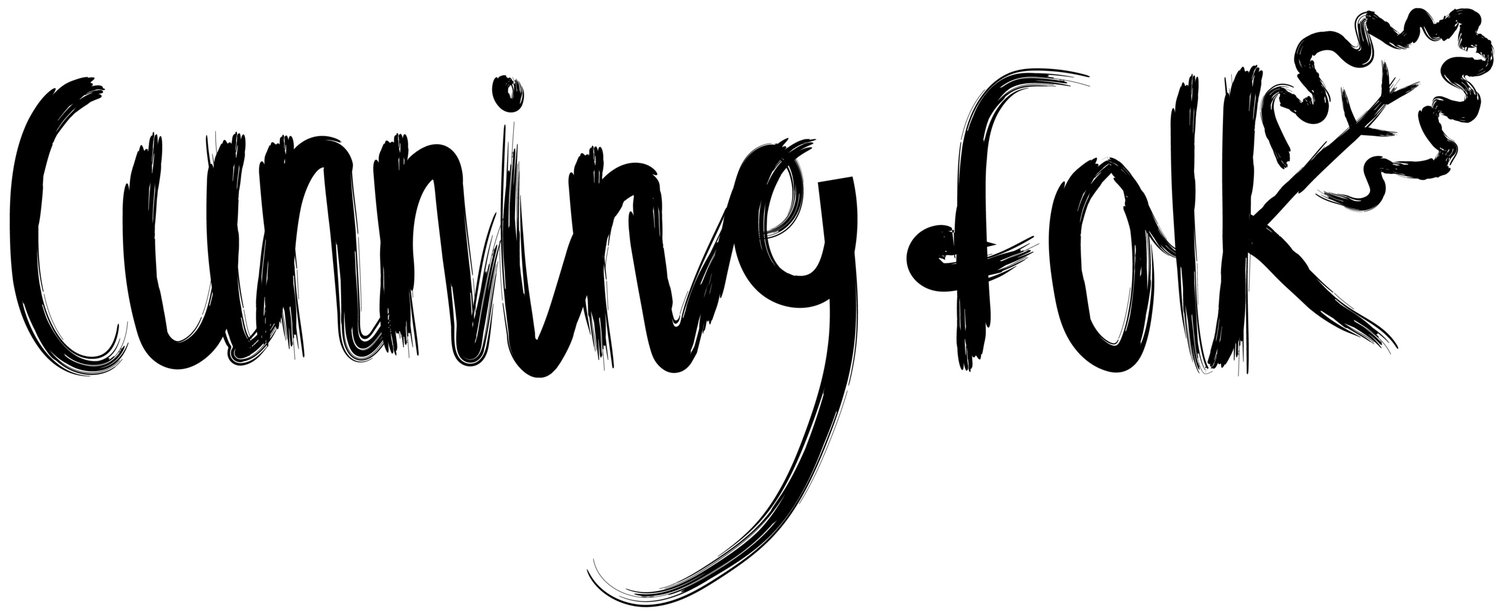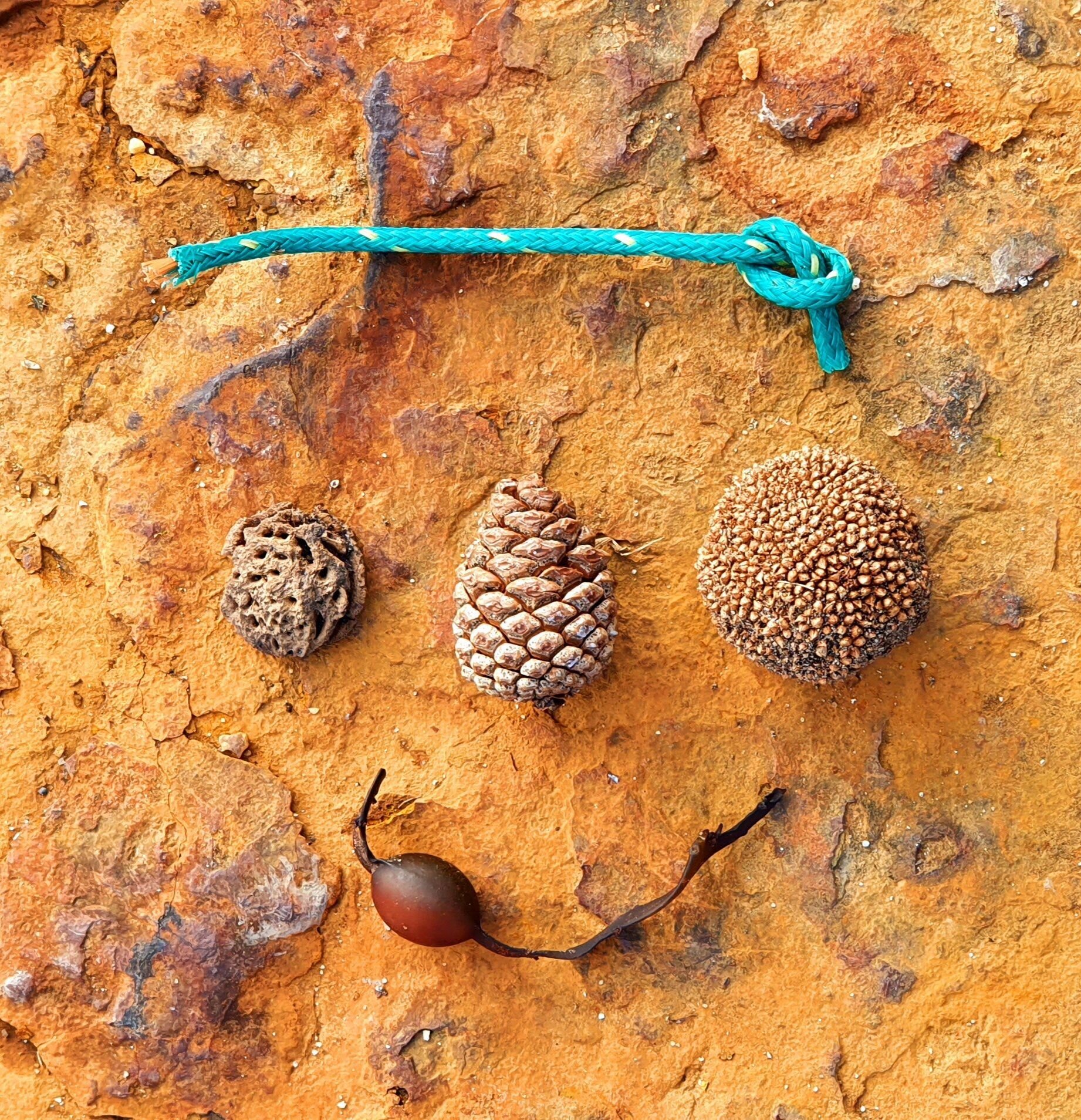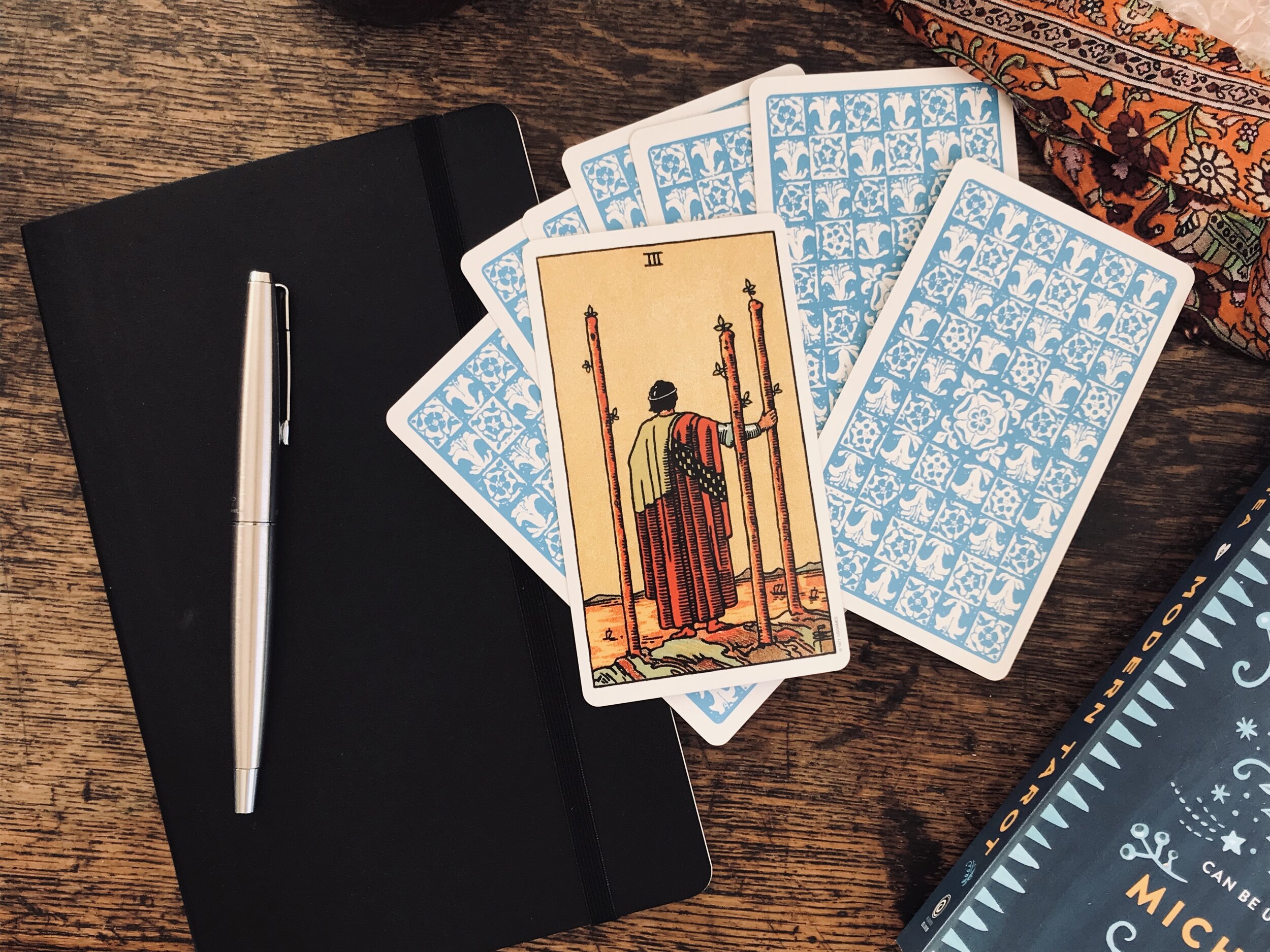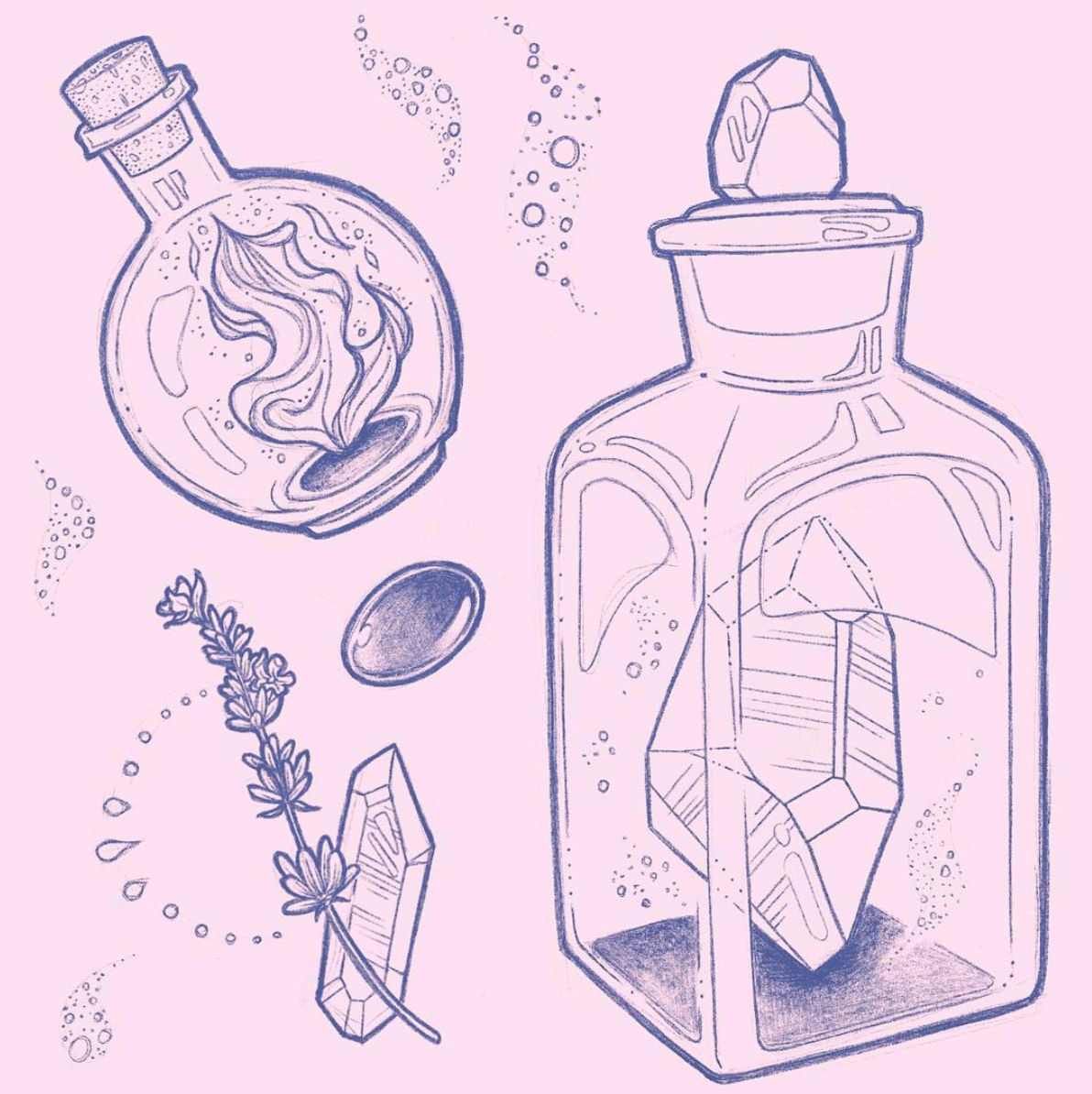Part ritual, part creative writing prompt, poet Callum James shares a spell for getting to know a spirit of place.
Peach pit, Plane and pinecone: bladder and cord.
Stamshaw Lake is not a lake at all, it is a narrow backwater at the top of Portsmouth Harbour. It is open at both ends and about a kilometre long. There is a path which runs along one side next to a dirty strip of pebble beach and just a few feet away on the other side of the path, out-of-view, is an eight-lane motorway. The path is occasionally inundated by a high tide and half-covered with crispy bladder-wrack shot through with driftwood, marine rope and rubbish, most of it plastic. Across the water, about 200 metres away from where I walk, is Whale Island. It’s approached by a low road bridge that can’t be crossed; a barrier and a guardhouse ensure only those who have business at the naval training base on the island are granted passage. You can look north to a Roman castle in the distance, and south to the continental ferry port where vast, white ships look like pieces of the city detaching themselves as they set off for France. In the pandemic lockdown, this is a far as I can go for my daily exercise. And so I find myself trying to get to know the spirit of place I have only known in passing before. There are all kinds of ways to begin a relationship with place spirits, but I want to share a very simple ritual to that end.
First we ought to briefly consider what we mean by place spirits, or the spirit of a place. Is the spirit of a place just the feeling we have when we step into a particular landscape? And why do we, so often, feel the need to put ‘just’ in front of that? As if we want to minimise its importance or to put a kind of air quotes around the idea of “a spirit”. In truth, we have all taken a hit from living in a materialist culture. Trying to move from an acceptable, mainstream, and materialist appreciation of ‘the spirit of a place’ as a subjective (again, as if it wasn’t valid) experience, to an understanding of a place spirit as a person in its own right is very difficult. The answer may well reside in animism, an approach to the world in which everything is conscious, can have personhood and agency. It’s true that the consciousness of a volcano is of a very different order to our own, but when we start to change our culturally derived mindset from materialism to animism, we start to move from the spirit of a place to a place spirit.
Snail-spiral, screwthread, feather-stripes and sea cork.
This piece of magic involves the body (in the walking), things (in found objects), and words (an invocation).
Go into the landscape whose spirit you want to contact and go with that purpose in your heart. Go slowly. Meander, don’t march. Spend time. Be silent. Wander around your landscape as if you do not intend to return from it. As you walk, keep an eye out for small things that fit in the palms of your hands. They might be pieces of the natural world: a strangely shaped pebble, a seed, a nut. Things that have been lost or thrown away: a marble, a cigarette lighter, a piece of foil from a sweet. A piece of the built environment: a small chip of brick, a fragment of glass or an iron nail. Look for the unusual and interesting. Make sure that whatever you pick up appeals to you in some way, for its colour or texture, its strangeness, its out-of-placeness, its prettiness or even its grimness. Through searching you will gather an assortment of things.
The next stage is to bring your creativity to bear. At Stamshaw Lake I like to create “beach collages”, finding an appropriate background and making arrangements of a few found objects in a way I find appealing. Whilst working on them I am always open to the idea that the collection and the collage is a collaboration, that I am open to prompting. It is a matter of paying attention: changes in the wind, unexpected sounds or shadows, the glint of sunlight or the resonance of something you find with some part of your own inner life; all these things can be forms of communication. The important part of this bit of the magic is that your creativity is engaged. If we are open to the idea that there is a consciousness and an agency at work in the spirit of the place, then our imaginative faculties, our creativity is the part of our own consciousness best placed to interact with it. Don’t overthink it, but find a way to create something from the found objects you have.
I would suggest not taking these things away, at least not immediately. Leave them there. They are, after all, a part of the spirit you are attempting to contact and taking them home for a pretty display on the windowsill seems somehow counterproductive.
Also, when gathering, don’t shy away from the more difficult aspects of the Spirit as it presents itself. At Stamshaw, there is ample evidence of the plastic crisis in the oceans, and of the other rubbish we choke the world with: over the years many people have died on the motorway that runs nearby: from the Romans to the Royal Navy this place has been steeped in Imperialism, military adventurism and even slavery. All this is a part of the place spirit and may find an expression in the found objects it offers up.
The last step is to write down a list of the objects you’ve gathered. Give thought to the naming and describing. It can be a simple list or an art piece in itself. Repeat this over a number of days, weeks, however long it takes and each time you do it, come away with a short string of words. You can then weave those words into a spell. Having written them on the spot, gather those words together at home—don’t be afraid to edit and change, but join them all together. If you have proceeded with respect, playfulness, and imagination you will have an invocation which will put you in touch with the Spirit of The Place whenever you want to call it to you.
Bitumen and bent fork, flint, whelk and weed.
Walk. Listen. Find. Create. Write.
Rust flake, red leaf,
copper, tile and spring;
flint, whelk, green weed,
sprite of twisted string.
Feather stripes, bleached root,
bottletop and cork;
bladderwrack, bitumen,
slate and knotted fork.
Burnt wood, charred wood,
blue stick and hag stone;
screw thread, sea glass,
peach pit and pinecone;
painted wood and driftwood,
snail, net, and bone.
All images © Callum James










